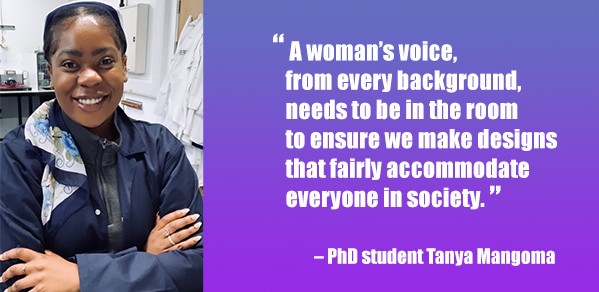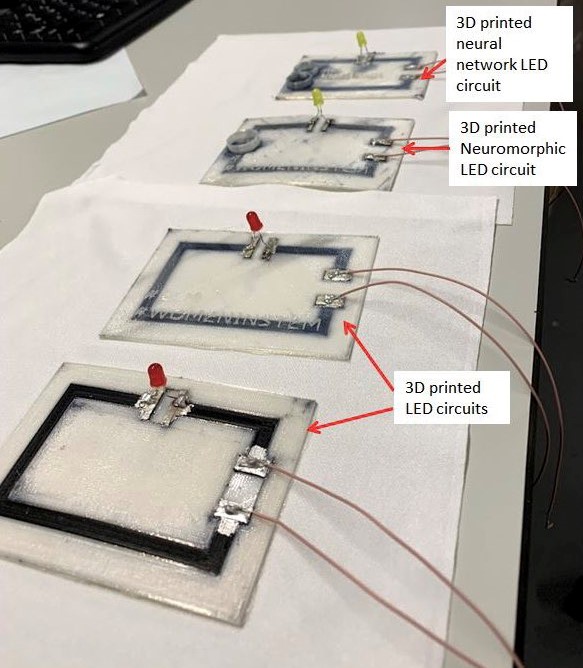
Tanyaradzwa (Tanya) Mangoma enjoys the challenge of learning something new and being innovative. Her PhD research in the neuromorphic computing field – the next generation of Artificial Intelligence (AI) – focuses on 3D printing organic electrical circuits that function like the brain. Here, she reveals more about her Cambridge experience, as part of our Women in Engineering series.
Seeing and working with a product from invention to packaging blew my mind and gave me the confidence to focus on a PhD in something related to manufacturing.
Tanya Mangoma
Despite originally choosing to study Engineering with the goal of one day becoming a banker, Tanya discovered within just the first few weeks of her undergraduate lectures at the University of Manchester, that a role sitting between innovation and industry would be an exciting prospect.
“I got given an amazing opportunity to work in industry for a year in manufacturing,” she said. “Seeing and working with a product from invention to packaging blew my mind and gave me the confidence to later focus on a PhD in something related to manufacturing. It’s been a privilege just to sit, think and play around with science.”
Tanya joined the Centre for Doctoral Training in Ultra Precision Engineering at the University of Cambridge in 2017 and the following year she began a PhD in AI-defined, next-generation adaptive electronics for neuromorphic engineering. She is part of both the Fluids in Advanced Manufacturing research group at the Institute for Manufacturing (IfM) and the Bioelectronics Laboratory at the Department of Engineering.

Her research involves working on the 3D printing of organic electrical circuits that function like the brain, in the hope that by 3D printing these devices, we could, says Tanya, one day form mini personalised bio-machine interfacing computers that can sense, predict, control and tune biological systems in real-time. Her published research on organic semiconductors for brain-inspired computing appears in the journals Advanced Materials Technologies (2020) and MRS Bulletin (2020).
“I really enjoy the work that I am currently doing and would like to do further research into and build translational frameworks for the industrialisation of 3D printed neuromorphic devices. This would expand my research interest into areas such as material and manufacturing optimisation, bioinformatics data capture and storage from the devices, and ethics. Upon finishing my PhD, I am hoping to secure a role at institutes or organisations that are interested in exploring these or similar areas, after which, I intend to continue working in-between innovation and industry.”
Looking to the future
Tanya’s message for women interested in pursuing a career in engineering or the wider AI field is simple: do it, you never know who you may be inspiring!
“I would recommend women to pursue a career in any novel engineering or AI field, or even make one up. Traditionally, engineering has been a white male-dominated field, but engineering advances are increasing integration of people and technology; even moving towards integrating deep tech into our biological environments.
“A woman’s voice, from every background, needs to be in the room to ensure we make designs that fairly accommodate everyone in society. Also, who knows, you might just be the next ̷B̷i̷l̷l̷ ̷G̷a̷t̷e̷s̷ – excuse me – the next Mary Barra (first female CEO of a major automotive firm); Alicia B. Davis (a champion of women in the automotive industry); Priya Balasubramaniam; Ginni Rometty (entrepreneur and CEO); Gwynne Shotwell (SpaceX president and chief operating officer); or Eileen Burbidge (top UK tech personality) – in the making!”

